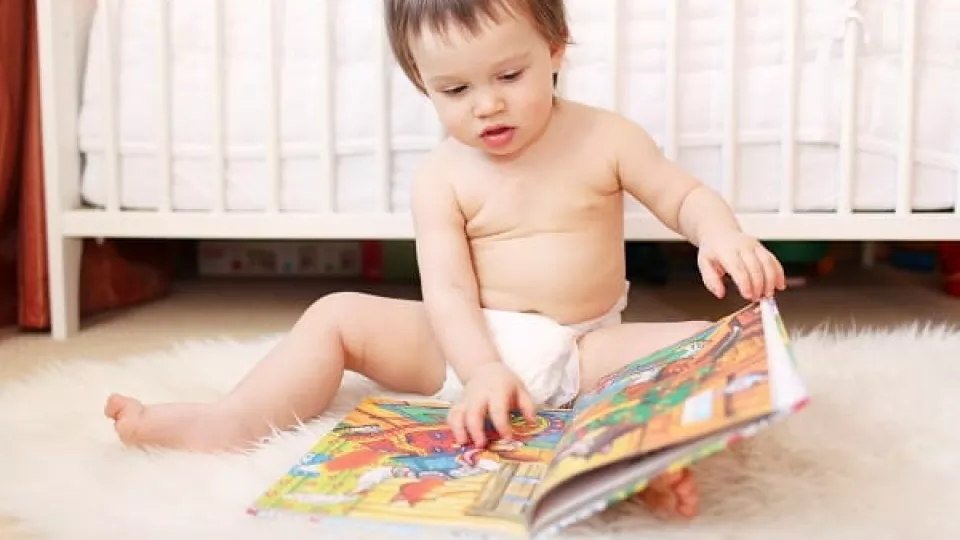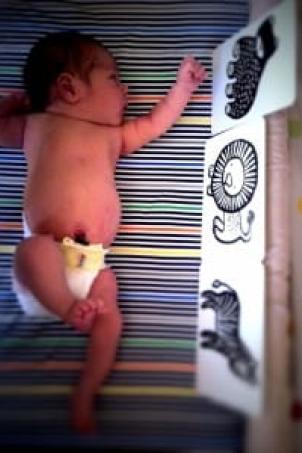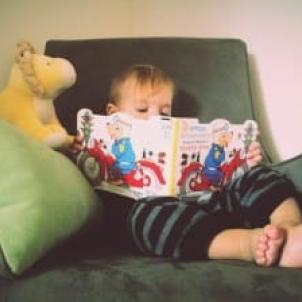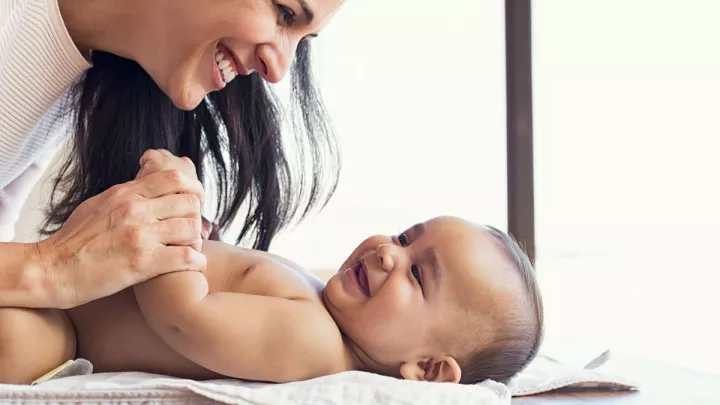
Help Your Baby’s Eyes Develop
One of the most magical moments for parents, following the birth of their baby, is when their newborn opens their eyes for the first time. Making eye-to-eye contact with your baby is priceless! Many new parents wonder, “What exactly does my baby see?”

Help Your Baby’s Eyes During Pregnancy
There are simple measures you can take during your pregnancy to help the development of your baby’s eyes and vision. Keep reading to learn how you can help your baby’s vision and understand what exactly they see during their first few months of life.
The recommendations below can help in the development of your baby’s eyes and vision:
- Maintain healthy nutrition.
- Avoid smoking, drugs and alcohol consumption.
- Always discuss with your OB/GYN before taking new medications, over-the-counter drugs and even herbal therapies.
- Take a prenatal vitamin, daily, with Omega 3 Fatty Acids – the DHA (docosahaxaenoic acid) has been proven to aid the baby’s developing eyes and brain.
What Your Baby Can See at Birth
Like most other systems in your baby’s body, the eyes and brain are immature and need time to grow and develop after birth. Your newborn can only see in shades of grey, ranging from black to white. Seeing colors will develop by the first month of life. Their ability to focus on close objects is not very good and this is because the nerves in the eye are underdeveloped. Even though your baby cannot focus on close objects, I recommend holding, talking and looking at your baby as much a possible because your newborn will be drawn to your face.
If your newborn does not look right at your face, do not get discouraged. Within the first couple of days and weeks they will begin to look right at you.
What Your Baby Can See at One Month After Birth
Within the first weeks after birth your baby will begin to see colors in all their glory! The first colors your baby will begin to see are red, and then orange, yellow and green. The colors blue and violet are the final colors in the spectrum your newborn will see. Additionally, your baby’s eyes are not very sensitive to light, so it is okay to leave the night-light or reading light ON in the nursery. Something to remember, your baby’s eyes can be very sensitive to the harmful UV rays of the sun, so make sure their eyes are protected when outside.
What Your Baby Can See After Two or More Months
This stage in visual development is full of milestones. Your baby will start to follow objects with their eyes and begin reaching for things. At this stage they also begin to be able to move their focus from one object to another without moving their head. Their eyes become more sensitive to light, so it’s best to slightly dim the lights in the nursery. I recommend using a night-light in your baby’s nursery because the night-light is important for visual stimulation while they are lying in their cribs.
How to Keep Your Baby Occupied While Their Eyes and Vision Develop

Understanding what your baby can see is very important when it comes to grabbing their attention or keeping them occupied during moments like diaper changes or getting dressed. When your baby is a newborn, keeping them occupied is rarely a problem. But as your little one begins to focus on objects and reach for things, their attention can wonder when you are trying to change their diaper or putting on their clothes. Where once your baby remained cooperative, now they are squirming and rolling away.
I polled several mothers, combined with my experience working in Children’s Hospital Los Angeles Institute for Maternal-Fetal Health and have collected some effective methods you can do to keep your little one occupied:
- Sing to your baby. Although not entirely related to your baby’s visual development, at a young age is a great distracter.
- Make funny faces. Like I mentioned above, your baby will be attracted to your face.
- Try an infant visual development video or a baby-approved mobile app. Visual development videos and mobile apps have high contrast pictures mainly in black and white with the color red added because this is the first color your baby can see. This is an example of a visual development video.


